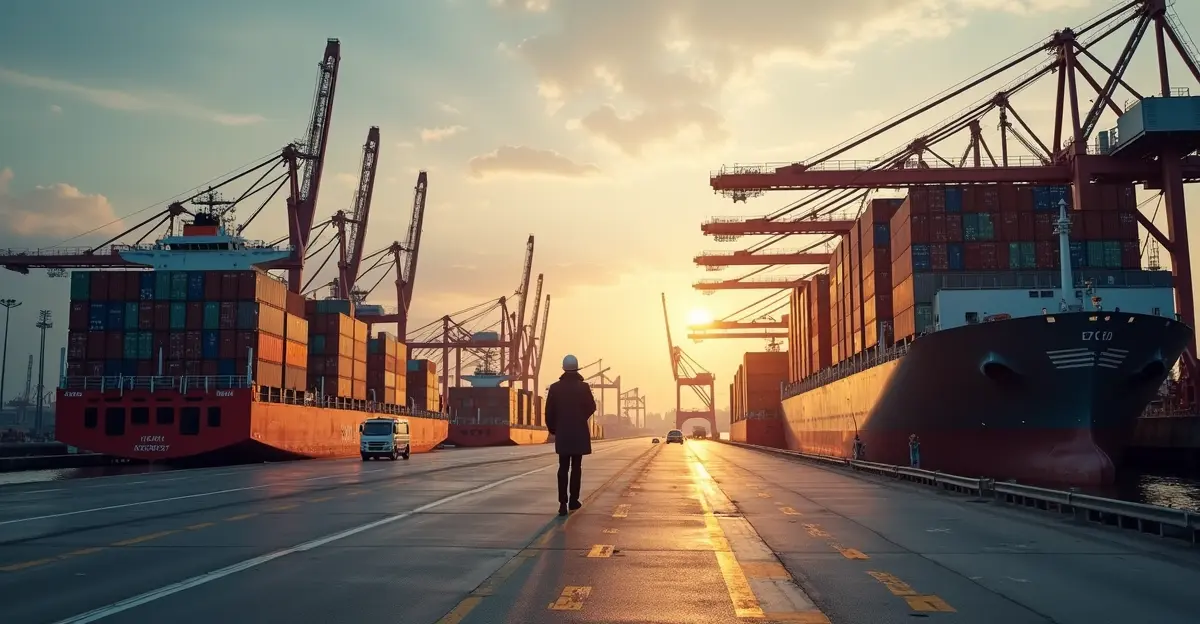Global port congestion reaches crisis levels in 2025, with trade facilitation measures including digital transformation, operational reforms, and inland logistics enhancements emerging as key solutions to alleviate supply chain bottlenecks.

Global Port Crisis Demands Urgent Trade Facilitation Solutions
As global port congestion reaches critical levels in 2025, trade facilitation measures are emerging as the most promising solution to alleviate supply chain bottlenecks that threaten international commerce. With 96% of major container ports reporting operational disruptions and vessel delays surging 300% above normal levels, the situation represents the most severe global supply chain bottleneck since the COVID-19 pandemic.
Digital Transformation Leads the Way
According to BCG's 2025 analysis, digital transformation is proving crucial for operational efficiency across global container ports. The benchmark study of 32 terminals across four continents reveals significant variations in digital maturity, with large terminals in EMEA leading in digitalization across six key macro-processes: yard operations, gate and landside flow, external stakeholder integration, horizontal transport, vessel operations, and equipment automation.
'The data clearly shows that ports investing in digital gate systems and real-time monitoring capabilities are weathering the congestion storm much better than their traditional counterparts,' says Maria Rodriguez, a senior port operations analyst at UNCTAD.
Inland Logistics Enhancements Critical
The congestion crisis extends far beyond port gates, with inland logistics becoming a critical bottleneck. Northern European terminals like Rotterdam, Antwerp, Hamburg, and Bremerhaven are experiencing their worst bottlenecks since the pandemic, with berth waiting times surging dramatically - up 37% in Antwerp, 49% in Hamburg, and 77% in Bremerhaven.
Recent analysis shows that ships now wait 6-10 days to berth, with similar congestion affecting ports in Asia, Africa, and the US. The root causes include complex hand-offs between terminals, ships, rail, and inland transport, exacerbated by labor shortages and lack of digital coordination.
Operational Reforms Show Promise
Trade facilitation measures focusing on operational reforms are demonstrating significant impact. The simplification and harmonization of international trade procedures, as defined by the WTO Trade Facilitation Agreement, are becoming increasingly critical in this challenging environment.
'We're seeing ports that implement electronic single windows and paperless trade systems reduce processing times by up to 40%, which directly translates to reduced congestion and faster cargo movement,' notes trade expert Alexander Silva, who has been monitoring these developments closely.
Global Hotspots and Regional Variations
The congestion crisis is not uniform across regions. 2025 port congestion analysis reveals a mixed global performance picture with significant delays impacting major trade hubs differently. Shanghai Port is experiencing severe congestion with vessels waiting 2.4 days for berths and containers spending 6.5 days in dwell time, resulting in a 10.1-day total cycle from vessel arrival to gate-out.
Los Angeles shows improvement in vessel handling (0.6 days arrival to berth) but faces elevated 5.7-day container dwell times due to record container volumes. Hamburg demonstrates the most stability with 1.2-day vessel berth times and 3.7-day container dwell, showing recovery from previous labor shortages.
Economic Impact and Business Response
The economic consequences are substantial, with demurrage charges reaching $75-300 per container daily and multimillion-dollar trade losses accumulating across supply chains. Businesses are responding by implementing 'China+1' diversification strategies and adopting digital compliance tools to navigate new regulatory barriers.
'The combination of real-time maritime visibility with flexible orchestration is proving to be the most effective approach,' explains logistics consultant Sarah Chen. 'Companies that can proactively reroute shipments and automate notifications are seeing significant reductions in detention costs and improved delivery reliability.'
Future Outlook and Strategic Investments
Looking ahead, infrastructure investments are becoming critical strategic assets. Ports are focusing on automation, green energy integration, and digital compliance tools to maintain competitive advantage. The development of industry-wide digitization standards would significantly boost digital maturity across the global port system, enabling more efficient global trade flows.
As the global trade landscape undergoes seismic transformation driven by tariff policies and supply chain reallocation, trade facilitation measures are no longer optional but essential for maintaining global commerce efficiency and resilience.

 Nederlands
Nederlands
 English
English
 Deutsch
Deutsch
 Français
Français
 Español
Español
 Português
Português









